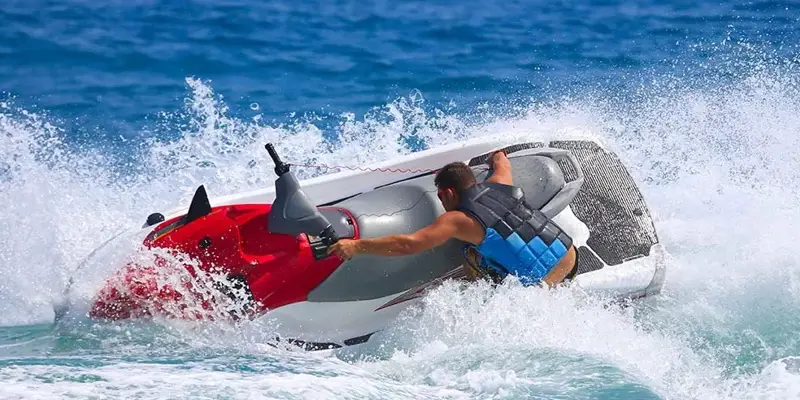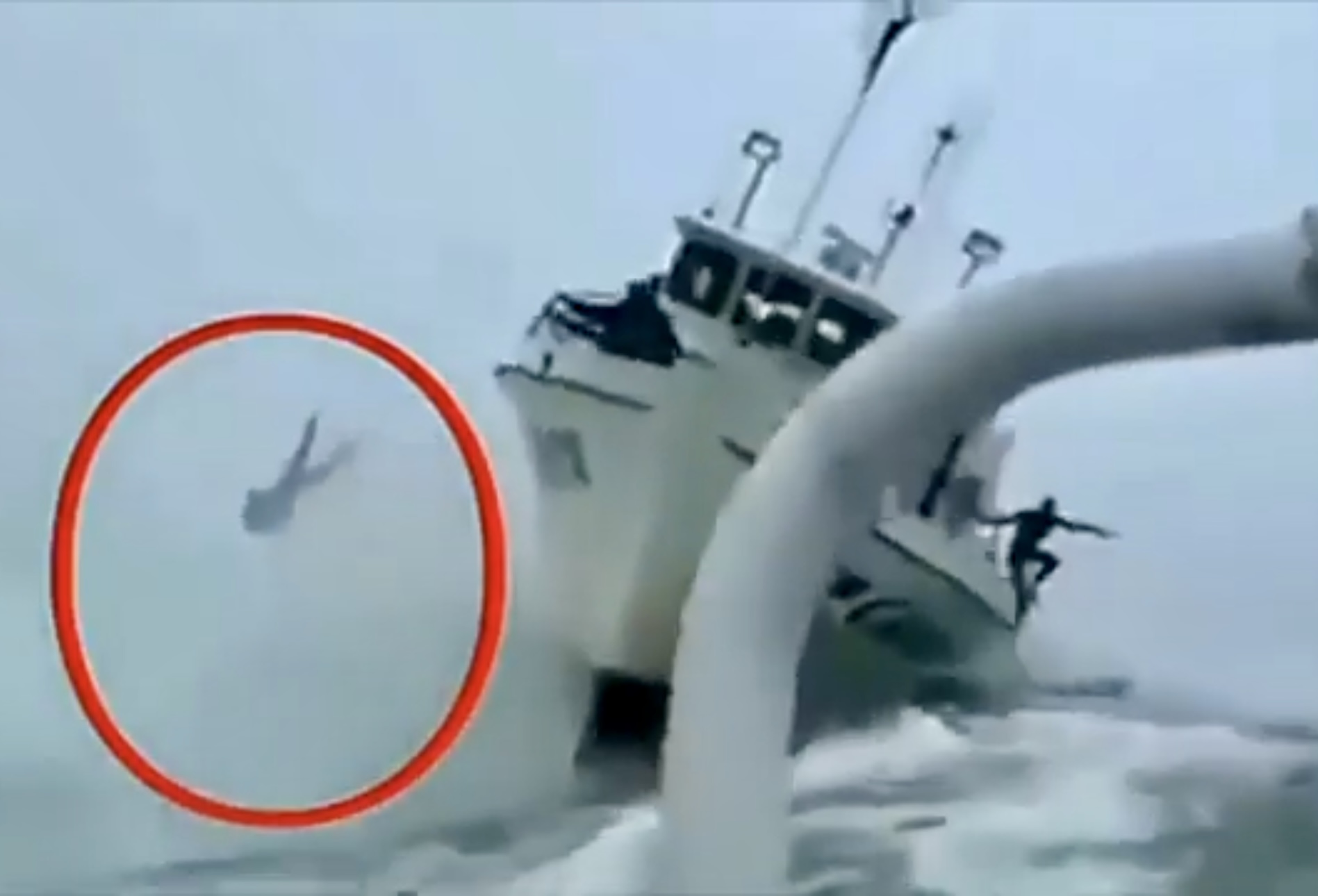What is one part of a regular vessel and engine maintenance program? A quick look at oil changes
Taking care of your boat is key to keeping it running smoothly and safely on the water. A good maintenance program involves several important steps. One crucial part is checking and changing the engine oil regularly. Regular oil changes keep the engine running well, stop parts from wearing out too fast, and lower the chances of engine damage.

Boat owners should also pay attention to other parts of their vessel. This includes looking at the fuel system, battery, cooling system, and belts. It's smart to check the hull for any damage too. Doing these checks often helps catch small problems before they turn into big, expensive ones.
A complete maintenance plan goes beyond just the engine. Boat owners need to clean their vessel, do safety checks, and get ready for winter if they live in a cold area. By taking care of all these things, people can enjoy safer trips on the water and keep their boats in top shape for years to come.
Understanding Your Vessel
Knowing your boat inside and out is key to safe boating. Two important aspects are the capacity plate and maximum weight limit. These help you operate your vessel safely and get the best performance.
Decoding the Capacity Plate
The capacity plate is like your boat's ID card. It's usually near the helm or on the transom. This small metal plate has big info. It tells you how many people can safely ride on your boat. It also shows the maximum weight your boat can handle.
The plate lists the maximum horsepower for your engine too. This helps prevent overloading your boat with too much power. Some plates even show the maximum weight capacity for people, gear, and motor combined.
Always check your capacity plate before heading out. It's not just a rule - it's for your safety and your passengers' safety too.

Recognizing the Importance of Maximum Weight
Maximum weight is crucial for your boat's performance and safety. Overloading can make your boat unstable and hard to steer. It can even cause it to sink in rough waters.
The max weight includes people, gear, and fuel. Spread the weight evenly for better balance. This helps your boat plane properly and improves fuel efficiency.
Remember, water conditions matter too. Rough waters mean you should carry less weight. A boat at max capacity might struggle in choppy seas. Always leave some wiggle room below the max weight for better handling and safety.
Engine Maintenance Essentials
Good engine care keeps your boat running smoothly. Regular checks and upkeep help avoid problems on the water. Let's look at key areas to focus on.
Checking Oil Level and Fluid Levels
Checking oil levels is a must before every trip. Low oil can damage your engine fast. Check the dipstick and top up if needed.
Don't forget other fluids too. Look at coolant, power steering fluid, and transmission fluid. Keep them at the right levels.
Clean oil helps your engine last longer. Change it as often as the manual says. Older engines might need more frequent changes.
Inspecting Belts and Hoses
Belts and hoses wear out over time. Check them for cracks, fraying, or looseness. A broken belt can leave you stranded.
Replace belts that look worn or feel loose. Hoses should be firm, not soft or squishy. Look for bulges or cracks.
Check clamps too. They should be tight and rust-free. Loose clamps can cause leaks.

Evaluating Battery Connections and Corrosion
Battery problems can ruin a day on the water. Check connections often. They should be clean and tight.
Look for white, crusty stuff on terminals. That's corrosion. Clean it off with a wire brush. A mix of baking soda and water works well too.
Make sure the battery is held down tight. A loose battery can cause big problems. Check the water level in lead-acid batteries and top up if needed.
Overseeing the Fuel System Health
A clean fuel system keeps your engine happy. Change fuel filters as the manual says. This keeps dirt out of your engine.
Check fuel lines for cracks or soft spots. Replace them if they look bad. Make sure all connections are tight.
Use fresh fuel. Old gas can gum up your engine. If you store your boat, use a fuel stabilizer. This keeps the gas fresh longer.
Operational Know-How
Knowing how to handle a boat in different conditions is key. This includes reading the water and docking safely. These skills help boaters stay safe and avoid problems.
Interpreting Water Conditions for Safe Sailing
Boaters need to watch for navigational hazards and understand water conditions. They should look out for:
• Waves and their size • Wind speed and direction • Currents and tides • Underwater obstacles
Learning to read these signs takes practice. Boaters can start by observing calm waters, then gradually move to more challenging conditions. They should also check weather reports before heading out.
It's smart to test skills in good weather first. As they improve, boaters can try tougher situations. This hands-on experience helps them make better choices on the water.
Mastering Docking in Various Currents
Docking can be tricky, especially with strong currents. Boaters should approach the dock into the wind or current, whichever is stronger. This gives them more control.
Tips for docking in currents:
• Go slow and steady • Use fenders to protect the boat • Have dock lines ready • Ask for help if needed
Practice makes perfect. Boaters can start in calm waters and work up to stronger currents. They should learn to feel how their boat responds to different forces.
It's also good to know how to leave a dock safely. Sometimes, it's easier to push off and let the current help. Other times, using the engine works better. Trying different methods helps boaters find what works best for their vessel.
Seasonal Care and Winterization
Taking care of your boat as seasons change is key. Winterizing is a big part of this, helping protect your vessel during cold months.
Preparing Your Boat for Winter
Winterizing your boat keeps it safe when it's not in use. Draining and removing all water from the engine is the first step. This stops freezing and cracking.
Next, focus on the fuel system. Add a stabilizer to the gas tank to prevent gunk from forming. Run the engine for a bit to circulate the treated fuel.
Don't forget about the boat's batteries. Remove them and store in a warm, dry place. This helps avoid damage from freezing temps.
Lastly, clean the boat inside and out. Cover it up to keep critters and moisture out. A good cover or shrink wrap works great for this.
Safety Procedures
Staying safe while maintaining your boat is key. Good habits keep you and others out of harm's way. Let's look at some important safety steps.
Preparing for Fire Hazards
Boats have many fire risks. Always keep a fire extinguisher on board. Check it often to make sure it works. Know where it is and how to use it.
Clear out oily rags and other stuff that can catch fire. Don't let them pile up. Store fuel and chemicals safely, away from heat.
Have smoke alarms on your boat. Test them each month. Replace batteries once a year.
Make a fire escape plan. Practice it with everyone who uses the boat. Know two ways out of each space.
Handling Fueling and Potential Spills
Be careful when you fuel up. Turn off the engine first. Don't smoke. Ask people to get off the boat.
Use a funnel to avoid spills. Don't overfill the tank. Wipe up any spills right away.
Keep fuel away from sparks. Use a pump, not a can, to fill up. Ground the nozzle against the fill pipe.
Have spill clean-up stuff ready. This includes absorbent pads and booms. Know how to use them.
If you spill, tell the marina staff. They can help clean up. Don't use soap - it makes things worse.
Check fuel lines for leaks often. Replace old or cracked hoses. Tighten loose connections.
Routine Cleaning and Upkeep
Keeping a boat clean and well-maintained is key to its longevity and performance. Regular upkeep prevents small issues from becoming big problems and keeps the vessel running smoothly.
Maintaining a Clean Vessel
Cleaning your boat isn't just about looks - it's about function too. A clean boat runs better and lasts longer. Start with a good rinse after each use to get rid of salt, dirt, and grime. Use boat-specific cleaners for different parts of the vessel.
Don't forget the interior! Wipe down surfaces, vacuum carpets, and clean windows. Pay extra attention to the bilge area. It can get nasty if ignored. A clean bilge helps spot leaks early.
Wax the hull every few months. This protects the paint and makes future cleanings easier. Remember to clean under the waterline too. Barnacles and algae can slow the boat down.
Regular Checkups for Optimal Performance
Regular checks keep a boat running its best. Start with the engine. Check oil levels and look for leaks. Listen for odd noises when it's running. These can be early warning signs of trouble.
Inspect the propeller for dings or bends. A damaged prop can hurt performance. Check the battery connections and fluid levels. Clean off any corrosion you see.
Look at all the hoses and belts. Replace any that look worn or cracked. Don't forget the electrical system. Make sure all lights and gauges work properly.
Test the bilge pump regularly. It's a crucial safety feature. Finally, check the steering and throttle controls. They should move smoothly without sticking.
Smart Launching Practices
Getting your boat in the water smoothly and safely is key to a great day on the water. Good launching habits save time and prevent accidents at the ramp.
Using the Boat Ramp Effectively
Boat ramps can get busy, so it's smart to prep your vessel before you get in line. Remove tie-downs, put in the drain plug, and load gear while still in the parking area. This cuts down time on the ramp.
Back your trailer straight down the ramp. Go slow and use a spotter if possible. It's easier to launch when the trailer wheels are just in the water.
Once in position, set the parking brake. Unhook the winch line and slowly back the boat off the trailer. Tie it to the dock if there's one handy.
Move your vehicle and trailer off the ramp right away. Park in the designated area. This keeps the ramp clear for other boaters.
When you're done for the day, follow the same steps in reverse. Have your gear ready to load up quickly. A smooth exit is just as important as a good launch.
Learning Tools and Resources
Boaters can use fun and effective methods to learn about vessel and engine maintenance. These tools help make important info stick and test knowledge in engaging ways.
Creating Flashcards for Quick Knowledge Checks
Flashcards are great for learning boat maintenance basics. Boaters can make flashcards with key terms and facts about engine care. One side might list a maintenance task, while the other gives details on how to do it.
Digital flashcard apps let users study anywhere. They can review oil change steps or parts of the cooling system while waiting at the marina. Flashcards work well for remembering schedules too. A card could show "Every 100 hours" on one side and "Replace fuel filter" on the back.
Engaging in Active Learning with Matching Games
Matching games make learning boat upkeep more fun. Players can match maintenance tasks to the right tools or parts. This helps them remember what goes where on the engine.
Online platforms offer ready-made boating quizzes with matching sections. A game might ask users to pair engine issues with the right fixes. Or they could match maintenance schedules to different boat parts.
These games work well on smartphones. Boaters can play while waiting for the fuel pump or during downtime on the water. The active nature of matching helps info stick better than just reading a manual.
Assessing Wind and Weather
Checking wind and weather is key for safe boating. It helps sailors plan their trip and adjust as needed on the water.
Adjusting Sailing Strategy with Wind Conditions
Wind speed and direction shape how boats move. Light winds need different tactics than strong gusts. Sailors should check wind forecasts before heading out.
On the water, keep an eye on flags, trees, and waves to gauge wind. These signs help boaters adjust their sails and course.
Strong winds can make waves bigger and choppier. This affects how the boat handles. Sailors might need to reef sails or change direction in rough conditions.
Water temp matters too. Cold water is more dangerous if someone falls in. Boaters should dress for the water temp, not just the air.
Cloud patterns can hint at coming weather changes. Dark, low clouds might mean a storm is on the way. It's smart to head to shore if the sky looks threatening.
Frequently Asked Questions
Proper boat maintenance involves regular checks and procedures. Key areas include engine care, safety inspections, and handling techniques for various conditions.
How often should you perform an oil change as part of boat maintenance?
Most boats need an oil change every 50-100 hours of use or once a year, whichever comes first. This keeps the engine running smoothly and prevents build-up of harmful deposits.
Checking the oil level before each trip is also important. It helps catch any leaks or issues early.
What are some important engine checks before launching your boat?
Checking oil levels is crucial before launching. Make sure coolant levels are good too.
Look for any loose hoses or wires. Test that the battery is charged and secure. Run the blower to remove gas fumes from the engine compartment.
How do you properly inspect safety chains on a boat trailer?
Check safety chains for rust or weak links. They should be the right length - not too long or short.
Make sure the hooks are secure and working properly. Cross the chains under the trailer tongue for extra safety.
What's the best method for docking a boat under windy conditions?
Approach slowly, at an angle to the dock. Use the wind to your advantage when possible.
Have fenders and lines ready. Ask someone to help if available. Be prepared to reverse engines quickly if needed.
What maintenance steps should you take after retrieving a boat from the water?
Rinse the boat thoroughly with fresh water, especially if used in saltwater. This prevents corrosion.
Check the propeller for damage. Remove any plants or debris from the hull. Let the boat dry completely before storing.
Why should you avoid power loading your boat onto a trailer and what's the alternative?
Power loading can damage the ramp and your boat. It creates holes at the end of the ramp.
Instead, use the winch to slowly pull the boat onto the trailer. This is gentler on both the boat and the ramp.
Charlie is Editor-in-Chief of Sea Magazine







